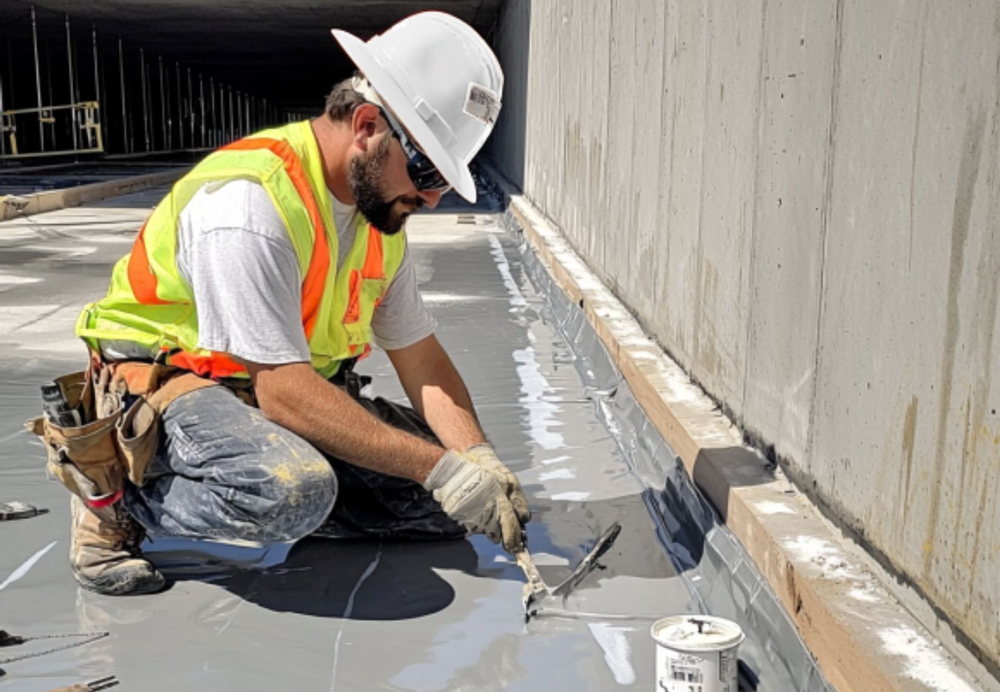Below grade waterproofing is a critical aspect of construction that ensures the longevity and integrity of structures built below ground level. This white paper aims to provide an overview of the basics, types, installation processes, and common issues associated with below grade waterproofing.
Learning Objectives
- Understand the basics of below grade waterproofing.
- Identify common types of below grade waterproofing membranes.
- Acquire knowledge of the installation process.
- Recognize common issues and solutions.
Basics of Below Grade Waterproofing
Below grade waterproofing refers to the protection of structures such as elevator pits and foundation walls from water intrusion. This is essential for maintaining the structural integrity and longevity of buildings. Poor installation or inadequate waterproofing can lead to costly repairs and negative impacts on the building’s lifespan.
Environmental Factors
Three key environmental factors to consider in below grade waterproofing are:
- Hydrostatic Pressure: The pressure exerted by a stationary liquid in all directions against adjacent surfaces.
- Capillary Action: The ability of water to flow against gravity due to hydrophobic pressure.
- Water Table: The level below which the ground is saturated with water.
Types of Below Grade Waterproofing Membranes
Below grade waterproofing membranes are typically categorized into three types:
- Prefabricated Sheet Applied Systems: These include adhesive membranes and thermoplastic sheets, known for their high hydrostatic resistance and consistent thickness.
- Liquid Applied Membrane Systems: These can be cold or hot applied and offer flexibility in application.
- Mineral-Based Systems: These include bentonite clay elements and crystalline materials, which are integrated into the concrete to prevent water intrusion.
Installation Methodologies
- Positive Side Waterproofing: This method involves installing the waterproofing membrane between the substrate and the source of water. It is the most common method and is typically used in the projects discussed.
- Blind Side Waterproofing: In this method, the waterproofing membrane is attached to an adjacent structure rather than the new structure’s wall. This is often used in high-rise buildings where the new foundation wall is built adjacent to the waterproof membrane.
- Negative Side Waterproofing: This method involves applying the waterproofing membrane on the interior side of the structure. It is less common and typically used in conjunction with other methods.
Installation Process
The installation process for below grade waterproofing involves several steps:
- Substrate Preparation: Ensuring the substrate is smooth, compacted, and free of debris.
- Membrane Installation: Applying the waterproofing membrane according to the manufacturer’s guidelines, ensuring proper overlapping and fastening.
- Detailing: Addressing penetrations, transitions, and corners to prevent water intrusion.
- Drain Board Installation: Installing a drain board to manage water and protect the waterproofing membrane.
Common Issues and Solutions
- Fish Mouths and Tears: Fish mouths and tears in the membrane are common issues that need to be addressed by patching and sealing.
- Voids and Inadequate Overlaps: Voids and inadequate overlaps can compromise the waterproofing system. These should be repaired according to the manufacturer’s guidelines.
- Surface Preparation: Proper surface preparation is crucial to ensure the effectiveness of the waterproofing membrane. This includes addressing honeycombs, cracks, and other surface defects.
Conclusion
Below grade waterproofing is a complex but essential aspect of construction. By understanding the basics, types, installation processes, and common issues, construction professionals can ensure the longevity and integrity of their structures. Proper planning, execution, and quality assurance are key to successful below grade waterproofing.





